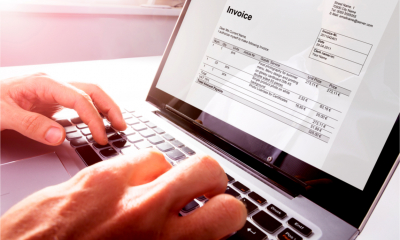
Need to register for VAT and start providing your customers or clients with VAT invoices? You must ensure that they contain all of the necessary details if they're to be acceptable to HMRC. You may need to know how to produce VAT invoices for sales to international clients and when to send your VAT invoices.
You can register even if your taxable turnover isn't above the VAT registration threshold of £90,000 a year from 1 April 2024 (previously £85,000), which enables you to reclaim VAT on things you buy for your business. The government website GOV.UK explains how to register for VAT.
Here are ten key facts you should know about VAT invoices.
1 You must be registered for VAT to issue VAT invoices
You can only issue VAT invoices once you are registered. They can be in paper or electronic form, but you must retain copies of all VAT invoices you send to your clients or customers – even if you cancel them or make a mistake when you produce one and need to send a replacement. You must retain copies of all purchase VAT invoices that you're given for things you buy for your business. Without these, you are not allowed to claim back the VAT.
2 A VAT invoice is not always needed
You're not required to issue a VAT invoice if:
- your invoice is only for exempt or zero-rated UK sales
- you're gifting goods
- you sell goods under a VAT second-hand margin scheme
- your client or customer operates a self-billing arrangement.
3 To reclaim VAT, you need a VAT invoice
You can't use an invalid invoice, pro-forma invoice, statement or delivery note to try to reclaim VAT, it must be a bona fide VAT invoice provided by your supplier.
4 You don't always have to send a full VAT invoice
For most transactions, you will send a full VAT invoice to your clients or customers. Alternatively, you can send a:
- "modified invoice" for retail supplies costing more than £250 or a
- "simplified invoice" for retail supplies below £250 (and other supplies after 1 January 2013)
5 Full VAT invoices must contain certain information
If you need to send a full VAT Invoice, it must include the following:
- a unique VAT invoice number that follows on from your previous VAT invoice
- your business name and address
- your VAT number (it begins with the letters GB and is followed by nine numbers
- date
- tax point or "time of supply" if this is different to the invoice date
- the customer's name/trading name and address
- description of the goods or services supplied
- total amount excluding VAT
- total amount of VAT in GDP
- price per item excluding VAT
- quantity of each type of item
- discount rate per item if applicable
- VAT rate charged per item (if something is exempt or zero-rated you should make it clear that no VAT has been charged on these items).
A modified invoice is similar to a full invoice, but it also includes the VAT inclusive price of products/services and the total amount including VAT.
6 Simplified invoices need less information
If you issue a simplified VAT invoice, you only need include:
- a unique VAT invoice number that follows on from your previous VAT invoice
- your business name and address
- your VAT number
- tax point or "time of supply" if this is different to the invoice date
- description of the goods or services supplied
- VAT rate charged per item (if something is exempt or zero-rated you should make it clear that no VAT has been charged)
- Total amount including VAT*.
*If items are charged at different VAT rates, this should be detailed for each.
7 Payment dates and amounts matter for 'cash accounting'
If you use 'cash accounting' (ie a financial record-keeping/bookkeeping method where revenues and expenses are recorded on the date they're received or paid, not when they were incurred), you must stamp a VAT invoice with the amount of cash paid and the date.
8 There are invoicing time limits
VAT invoices must usually be issued within 30 days of the date of supply or payment (if your business is paid in advance).
9 Rules are different for foreign currency invoices
You do not have to show all amounts on your invoices in sterling. If you issue VAT invoices in a foreign currency or language, you must:
- show the total VAT payable in sterling on your VAT invoice if supplied in the UK
- provide an English translation of any invoice within 30 days if asked to do so by a visiting VAT officer.
10 There are different options when converting foreign currency invoices to sterling
To convert to sterling when producing a VAT invoice you can:
- use the market selling rate at the time of supply
- use the European Central Bank's rate
- use HMRC's period rates of exchange (the rates usually remain the same for each calendar month)
- apply to HMRC to use a different method to account for the VAT.